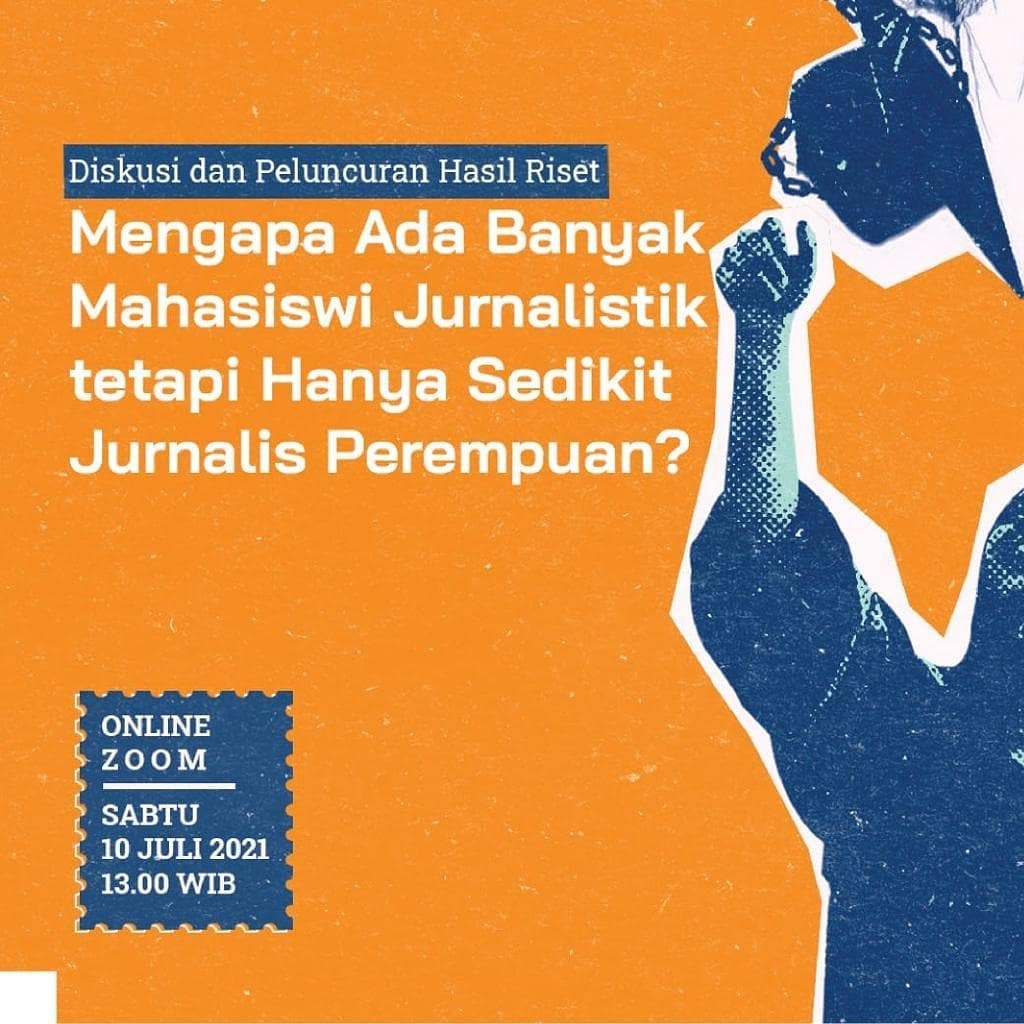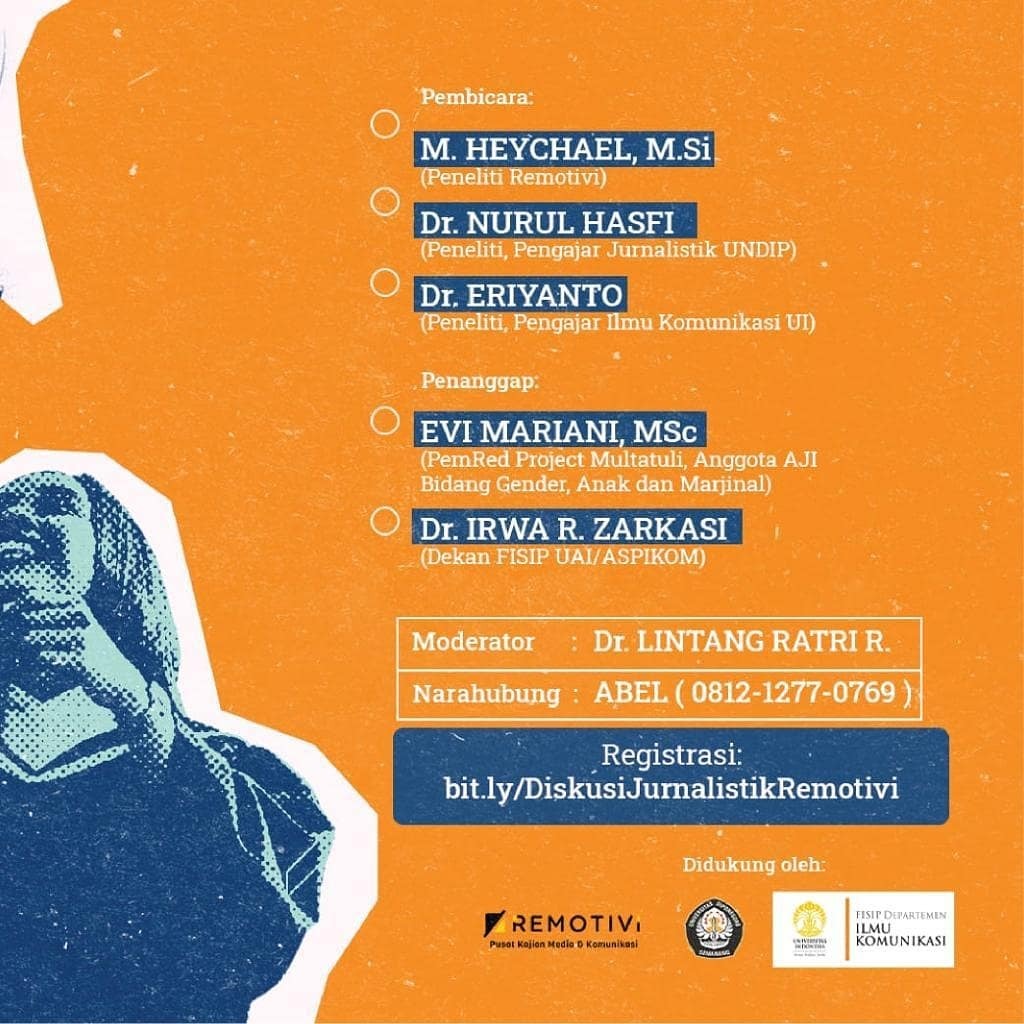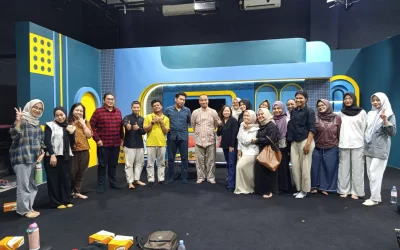 |
 |
Banner of journalism discusion and launch of research result “Why are There Many Female Journalism Students But Only a Few Female Journalist?” (Source : Instagram of Remotivi)
Semarang — The Undip, UGM, Unpad, and Remotivi Research Teams held a Discussion and Launch of Research Results entitled “Why are there many journalism students but only a few women journalists?” through the Zoom Meeting platform and attended by ± 400 participants in last Saturday (10/7/2021).
This research aims to trigger positive changes in the journalistic ecosystem that is friendly for women. The event was opened by Dr. Lintang Ratri as moderator, by announcing the speaker who will present the research results.
The first session was filled by three main speakers, including M. Heychael, M.Si (Remotivi Researcher), Dr. Nurul Hasfi (Undip Journalism Researcher and Lecturer), and Dr. Eriyanto (Researcher and Lecturer of Communication Science UI). All three were allowed to present the results of their research for 15 minutes. The second session was followed by giving responses regarding the research results that had been presented by Evi Mariani, MSc (Editor-in-Chief of Project Multatuli, AJI Member for Gender, Children, and Marginal Sector) and Dr. Irwa R. Zarkasi (Dean of FISIP UAI/ASPIKOM)
Background and Methods of Research Implementation
The research result presentation session was opened by M. Heychael, M.Sc., as the Remotivi Researcher. He said that this research was motivated by problems with the representation of women in the media, one of which was that there were only 10% of women journalists from the total number of journalists in Indonesia. These results were obtained through a research method by surveying journalism students who were in their final semesters at Diponegoro University, University of Indonesia, Padjadjaran University, and Gadjah Mada University. Through the survey, it was found that the interest of female and female students as journalists was relatively low.
Why Students Are Less Interested in Journalism
The second speaker brought the topic “Why Students Are Less Interested in Journalism”, namely Dr. Nurul Hasfi, as Undip Journalism Researcher and Lecturer. Based on the Social Cognitive Career Theory (SCCT), the career decisions of female students in choosing journalists as their final profession are influenced by self-efficacy factors and outcome expectations. With a positive outlook, a journalist can have privileges and networks. However, there is a negative view in the context of an uncertain career path and a small amount of salary.
“In terms of self-efficacy, female students believe they can become journalists, but lack confidence in being able to reach the top of their careers because of the cultural stereotype of patriarchal culture, where women tend to have careers in domestic work and the stereotype of women who puts forward feelings. That’s why many students are not interested in journalism,” said Nurul.
What is the Pattern of Student Career Decisions?
UI Communication Researcher and Lecturer, Dr. Eriyanto. Explaining that the self-efficacy of a student who believes she can succeed if she becomes a journalist after graduating from college will determine the expected results. The self-efficacy that is formed in female students is influenced by their competence and learning experience during college. In the internship experience, several female students said that the treatment for women and men was different in reporting, where women tended to be assigned to cover soft news, such as entertainment. In addition, there were several female interns who were sexually harassed while covering political issues.
Response Regarding Research Results That Have Been Presented
Evi Mariani, M.Sc., as Editor-in-Chief of Project Multatuli, AJI Member for Gender, Children, and Marginal Affairs, said that self-efficacy, which considers the journalist profession as masculine property, makes women less confident to enter a profession that is considered masculine. When they want to promote a female journalist, the leadership is expected to take an affirmative action, which is to vote based on ability and will, regardless of gender. Thus, a support system is needed from the women and others so that women journalists can survive in the world of the media industry. The survey conducted regarding the interest of students, both female and male, did decline in choosing the journalist profession as their career path.
The second response came from the Dean of FISIP UAI/ASPIKOM, Dr. Irwa R. Zarkasi. “Have the curriculum and lecturers teaching journalism and related subjects taught about gender journalism?” asked Irwa.
She conveyed this so that students are prepared to have a perspective on gender journalism, both from journalistic institutions, associations, universities, and industry can work together in improving the insight of journalistic development so that it can be taught in the lecture curriculum.
Conclusion of Discussion Results and Launching of Research Results
Expectations of students and college students are much influenced by the internship experience that is carried out. The treatment and all the lessons learned during the internship will determine the final decision of the student in choosing.
In addition to personal determination, campuses can also provide support to female students by strengthening women’s self-efficacy and efforts to eliminate violence in women’s journalism. The media industry can also improve the work environment by creating a gender-sensitive work culture and space. This is intended so that women journalists can survive in the world of the media industry.
Writer: Sanita Sitinjak
Reporter: Dinda Khansa Berlian /Salsabila Febryanti
Editor: Annisa Qonita Andini




0 Comments